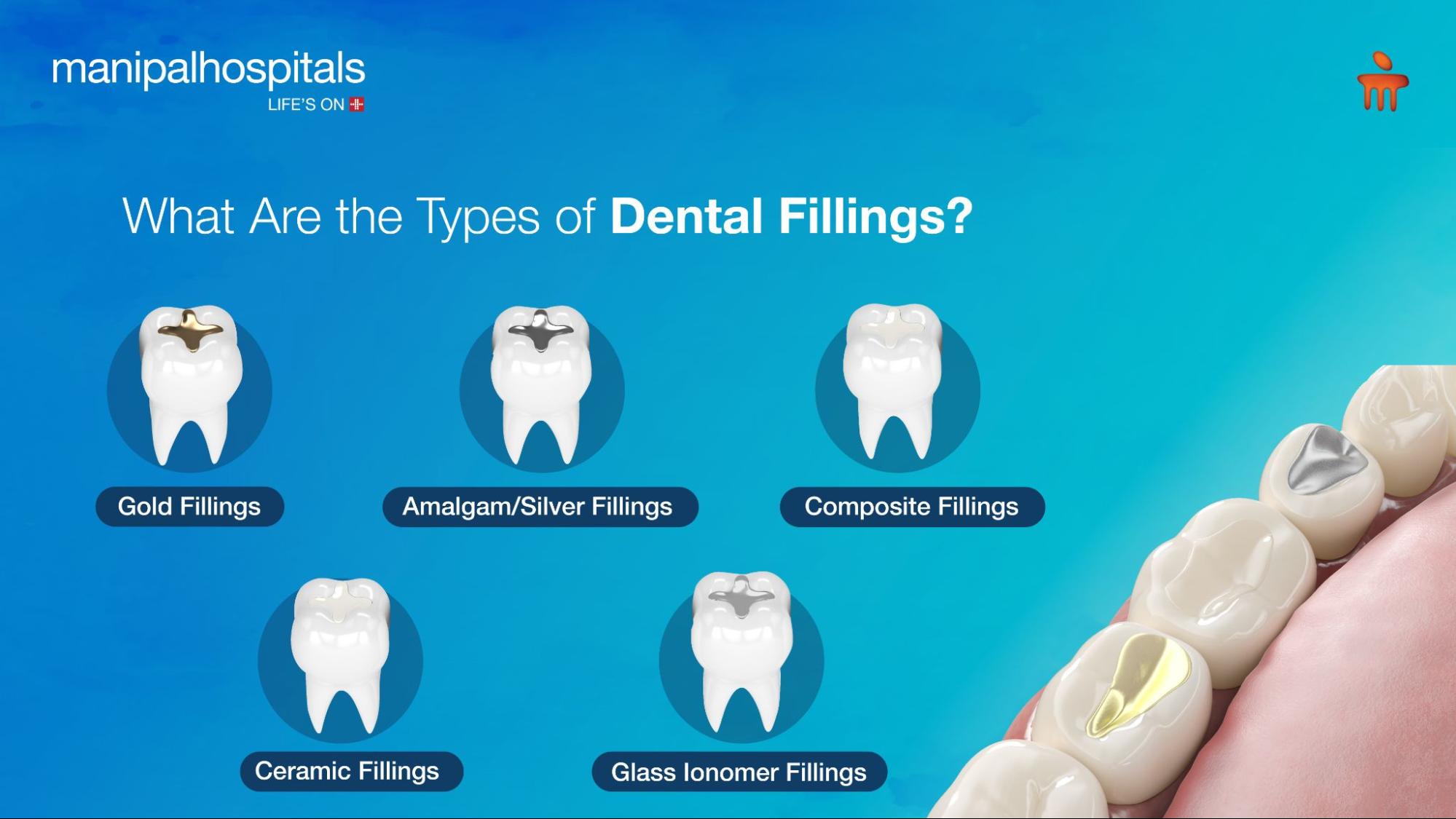Dental fillings are a great way to strengthen teeth weakened by cracks or decay, helping to prevent further damage. This restorative dental treatment not only brings back the tooth's function and natural appearance but also helps you maintain a healthy, confident smile. Dental fillings don’t just fix the damage—they also smooth out the tooth’s surface, making biting and chewing feel comfortable and effortless
This blog explores the procedure involved during dental filling, the types of dental filling materials available, and their advantages and disadvantages.
Synopsis
What Happens During a Dental Filling Procedure?
Based on individual preferences, the steps of the dental filling procedure can differ. It is mostly based on the type of dental filling material used and the type of filling. General steps, however, include the following:
-
Administration of anaesthesia to numb the affected tooth
-
Removal of decayed and damaged tissue from the tooth using specialised instruments. The healthy tooth is preserved as much as possible
-
Cleaning the area using acid gels to kill any remaining bacteria to apply filling material
-
Application of filling material to the area
-
Hardening of dental filling using curing light
-
Remove excess material
-
Polishing and final restoration to eliminate rough surfaces
-
Assessment of bite to ensure it feels comfortable
More Reads: Braces & Invisalign Procedure
What Are the Types of Dental Fillings Available?

Several types of dental fillings are available and are made from different materials. Choosing the right dental filling material is based on how severe the tooth damage is, its location, the preference of the patient, allergies to particular dental filling material, and dental filling costs.
1. Amalgam / Silver Fillings:
Amalgam, or silver fillings, are made by mixing silver and other metals like tin, copper, and mercury. These fillings are mostly suitable for cavities present in back molars.
Amalgam fillings are durable and last long. They are inexpensive and resistant to wear and tear. However, it can lead to poor aesthetics because the colour is noticeable. Moreover, they require the removal of more healthy tooth structures to accommodate the filling, which can cause cracks or discolouration and carry a small risk of allergic reactions due to mercury content.
More Reads: Root Canals Procedure
2. Gold Fillings
Gold fillings are made from the alloys of gold, often mixed with metals like copper, silver, platinum, and other materials for durability and strength. The material is one of the most preferred and best materials because of its strength.
Gold fillings can last 10–15 years or longer. However, they are very expensive and require at least two visits to the dentist. Rarely, they can cause a sharp pain called galvanic shock if placed near a silver filling. Gold fillings also have the added advantage of being resistant to corrosion. Aesthetics vary—some people find gold fillings attractive, while others prefer dental fillings that match the natural colour of the tooth.
3. Composite Fillings
Composite fillings consist of a mixture of acrylic resin and powdered glass to provide durability and a natural appearance. They provide enough support by binding to the tooth structure and can be matched with the colour of the patient’s teeth. As a result, these fillings are commonly applied to the front teeth and other areas that are easily seen.
Although these fillings allow patients to match the colour of their natural teeth, they may not be the ideal material as they wear down over time. They typically last only 5 to 10 years and require at least two dental visits. Additionally, the fillings can become stained by tea, coffee, or tobacco. The procedure is also time-consuming and expensive.
4. Glass Ionomer Fillings
Made from powdered glass and acrylic, the glass ionomer filling can also match the colour of a patient’s natural teeth and can be used in the front and other visible parts of the teeth. Glass ionomer fillings also can release fluoride, aiding in preventing tooth decay.
However, the fillings are not durable and last less than 3 years. It is also weaker compared to composite fillings and can be exposed to wear and tear. Newer ones, however, have a better life span and function similarly to composite fillings.
5. Ceramic Fillings
The ceramic fillings are made of porcelain and have a life span of 15 years. Although they are long-lasting, ceramic fillings are not commonly used. Moreover, it is more expensive than gold fillings and requires at least two visits.
More Reads: Dental Implants Surgery
Conclusion
Some dental fillings have undergone major improvements. Self-healing dental composites are currently under development, which involves adding tiny capsules filled with a healing agent to the composite material. When a crack forms, these capsules break and release the healing agent, sealing the crack. This technology allows composites to repair themselves, potentially eliminating the need to visit a dentist for minor cracks.
Choosing the right dental filling material is important for both the health and appearance of your teeth. Our dentists at Manipal Hospitals, Bhubaneswar, are always at the forefront to help you make an informed decision that suits your dental needs, lifestyle, and budget.



















 5 Min Read
5 Min Read




.png)




